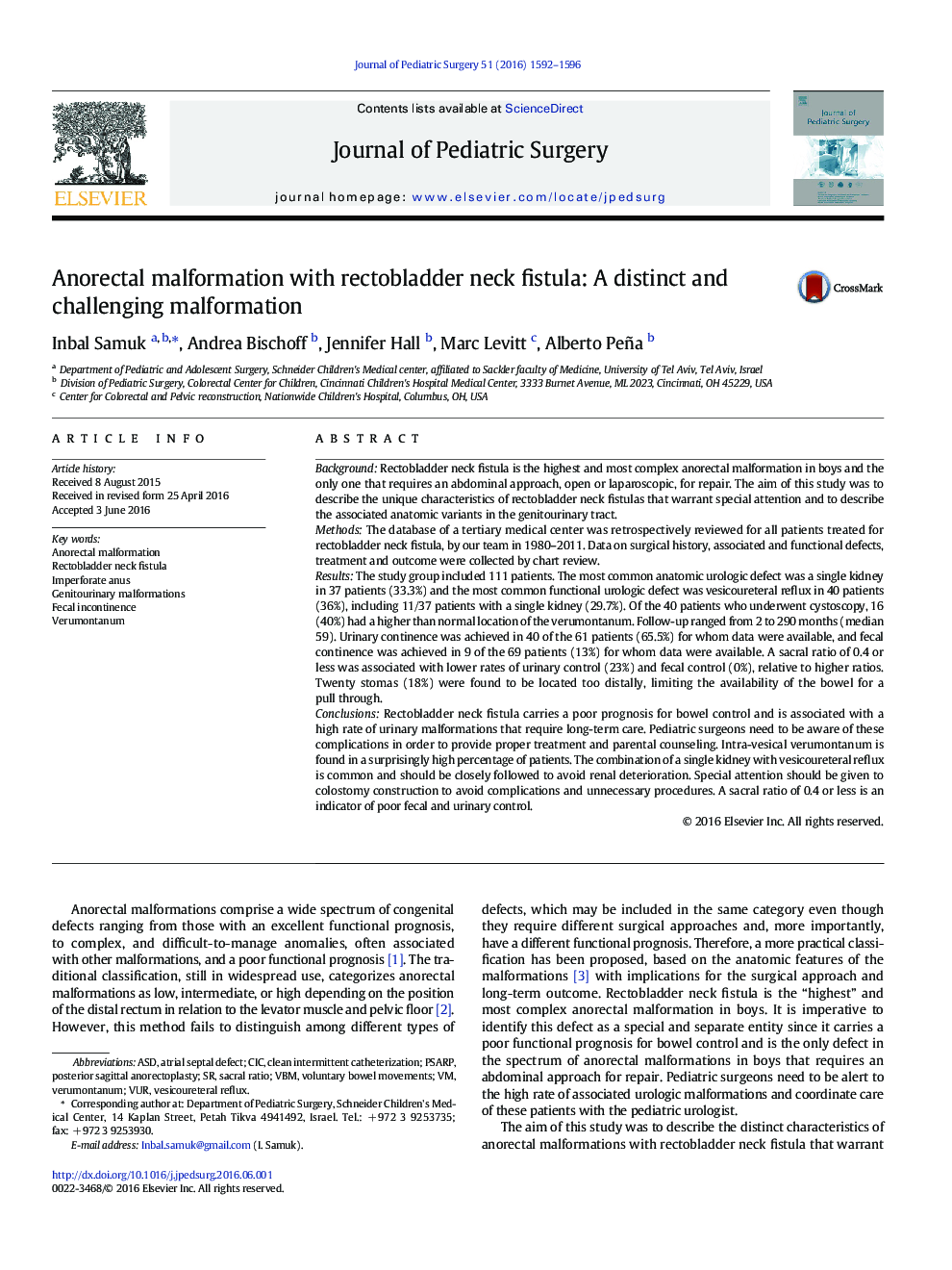| Article ID | Journal | Published Year | Pages | File Type |
|---|---|---|---|---|
| 4154663 | Journal of Pediatric Surgery | 2016 | 5 Pages |
BackgroundRectobladder neck fistula is the highest and most complex anorectal malformation in boys and the only one that requires an abdominal approach, open or laparoscopic, for repair. The aim of this study was to describe the unique characteristics of rectobladder neck fistulas that warrant special attention and to describe the associated anatomic variants in the genitourinary tract.MethodsThe database of a tertiary medical center was retrospectively reviewed for all patients treated for rectobladder neck fistula, by our team in 1980–2011. Data on surgical history, associated and functional defects, treatment and outcome were collected by chart review.ResultsThe study group included 111 patients. The most common anatomic urologic defect was a single kidney in 37 patients (33.3%) and the most common functional urologic defect was vesicoureteral reflux in 40 patients (36%), including 11/37 patients with a single kidney (29.7%). Of the 40 patients who underwent cystoscopy, 16 (40%) had a higher than normal location of the verumontanum. Follow-up ranged from 2 to 290 months (median 59). Urinary continence was achieved in 40 of the 61 patients (65.5%) for whom data were available, and fecal continence was achieved in 9 of the 69 patients (13%) for whom data were available. A sacral ratio of 0.4 or less was associated with lower rates of urinary control (23%) and fecal control (0%), relative to higher ratios. Twenty stomas (18%) were found to be located too distally, limiting the availability of the bowel for a pull through.ConclusionsRectobladder neck fistula carries a poor prognosis for bowel control and is associated with a high rate of urinary malformations that require long-term care. Pediatric surgeons need to be aware of these complications in order to provide proper treatment and parental counseling. Intra-vesical verumontanum is found in a surprisingly high percentage of patients. The combination of a single kidney with vesicoureteral reflux is common and should be closely followed to avoid renal deterioration. Special attention should be given to colostomy construction to avoid complications and unnecessary procedures. A sacral ratio of 0.4 or less is an indicator of poor fecal and urinary control.
